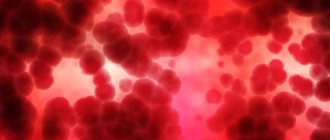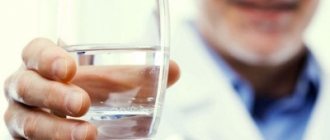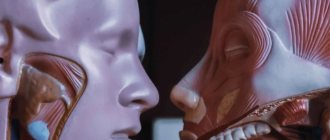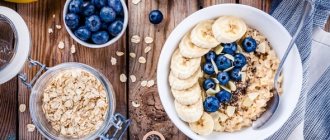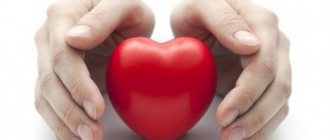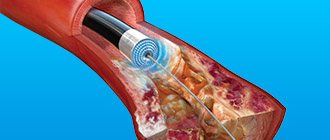In recent years, Glycine has become quite widespread among all parts of the population, since it is capable of having a complex effect on the body, due to which it is used in the treatment of neurological and vascular diseases. The drug contains a neurotransmitter amino acid, which causes inhibition of brain neurons and also reduces the production of biologically active substances that promote stimulation of the nervous system. Some experts prescribe the drug in combination with antihypertensive drugs for the treatment of hypertension. However, before starting use, patients need to find out how glycine affects blood pressure and is it effective in eliminating hypertension?
Glycine for blood pressure
Glycine is an amino acid that has a mild sedative effect, activates metabolism in the brain, normalizes the transmission of nerve impulses and the ratio of excitation and inhibition processes in neurons. The substance is especially effective on patients suffering from VSD. The amino acid also reduces the production of catecholamines (stress hormones), which raise blood pressure and cause tachycardia. The general muscle relaxant effect of the substance leads to a slight dilation of blood vessels. The nutrient does not directly affect the heart, but reduces the load on the myocardium.
Characteristics of the medication
Glycine belongs to a group of metabolic agents that accelerate metabolic processes in brain cells, while simultaneously causing inhibition of the transmission of nerve impulses by the central nervous system. The active ingredient in the drug is aminoacetic acid, which is involved in the transmission and regulation of nerve impulses. The active component has a complex effect on the body, as it is able to penetrate the structural elements of all organs, thereby activating their functional ability.
Tablets are packaged in blisters in quantities of 50 pieces
Glycine promotes the expansion of the vascular lumen due to the ability to block alpha-adrenergic receptors. Thanks to these properties, it restores blood circulation and normalizes blood pressure. If the patient has high blood pressure, then taking the drug will stabilize its threshold values.
Glycine helps in normalizing the following conditions:
- Unstable psycho-emotional background (aggression, depressive states, depressed mood).
- Disorders of the processes of sleep and falling asleep.
- Vegetative-vascular disorders, which may be caused by an imbalance of hormones.
- General cerebral disorders after ischemic stroke and traumatic brain injury.
Taking glycine for hypertension
Hypertension is a disease in which blood pressure rises to 140/90 mm Hg. It is provoked by the following conditions:
- decreased mental and physical performance;
- nervous overstrain after stressful situations;
- emotional instability;
- excessive excitability or irritability;
- neuroses;
- sleep disorders.
With such symptoms, doctors mainly use glycine in combination with antihypertensive drugs to normalize blood pressure.
Now Foods, Glycine, Pure Powder, 454 g
★★★★★
RUB 1,228
More details
Composition/description
Registration number: LSR-001431/07
Trade name: Glycine
International nonproprietary name:
glycine.
Dosage form:
sublingual tablets.
Composition per tablet:
microencapsulated glycine (in terms of the active ingredient glycine - 100 mg), excipients: methylcellulose - 1 mg, magnesium stearate - 1 mg.
Description:
round flat-cylindrical tablets of white or almost white color with marbling elements with a chamfer and a score.
General recommendations for admission
The glycine-based drug is available in a concentration of 100 mg. According to the instructions, you should drink it 2-3 tablets a day, and for insomnia - 1 tablet. 20 minutes before bedtime. The course of treatment is 2-4 weeks.
You can read the detailed instructions and also find out whether glycine increases or decreases blood pressure by watching the video:
Glycine: instructions for use, analogues, price of tablets and reviews
Amino acid supplements may contain higher dosages and may have separate dosage recommendations.
Attention! For any problems with blood pressure, treatment with glycine should be discussed with your doctor.
For hypotension, the daily dosage should be in the range of 100-200 mg. It is recommended to combine the drug with physical activity, which raises blood pressure and increases heart rate. During the entire course of treatment, tonometry and heart rate calculations should be carried out in the morning and evening before taking the drug: if the numbers are below 90/60 mm Hg, then it is better to skip taking the drug.
Supplements with high glycine concentrations are prescribed to lower blood pressure. The course of treatment can be extended on the recommendation of a doctor.
Dosage of the drug depending on the indications
The age category that can take the pills is wide, since taking the drug is indicated from the age of three. As a rule, the medicine is intended for resorption in the oral cavity for rapid absorption of the active component by the mucous membranes. The therapeutic effect occurs 15–35 minutes after administration.
The drug has virtually no side effects on the body, but patients should adhere to the specified dosage
The selection of an individual dose depends on the age category, body weight of the patient, and the underlying pathology.
It is recommended to use the medication for diseases in the following dosage:
- Stabilization of the nervous system. The specialist prescribes the use of the product in a course throughout the entire stressful period, 1 tablet 4 times a day.
- With increased intracranial pressure after injury or surgery. The therapeutic course is 3 months. The permissible dose is 2 tablets 3 times a day.
- Vegetative-vascular dystonia of the hypertensive type. The selection of the optimal dosage that the patient can drink is carried out by a specialist based on diagnostic data.
- Restoration of parameters after a hypertensive crisis. The tableted product is taken in the amount of 2 tablets 3 times a day. The therapeutic course is long.
Possible harm and contraindications
Glycine with high blood pressure is usually well tolerated. This amino acid enters the body daily through food and is considered safe. A substance can cause harm only if the recommended dosages are not followed or the medicine is used without taking into account contraindications, which include the following conditions:
- intolerance to substances included in the drug;
- decreased activity of sucrase, isomaltase;
- indigestibility of fructose;
- hemorrhagic stroke;
- cerebrovascular accident;
- hemorrhages in the brain.
Hypotension is not a direct contraindication for the use of glycine, since it reduces blood pressure only slightly. However, it is recommended to adhere to minimum dosages, regularly carry out tonometry and monitor clinical symptoms - the appearance of dizziness, tinnitus, flies before the eyes, weakness.
On the first day of treatment, allergic reactions to the drug may occur. They manifest themselves in the form of rashes, itching, redness and swelling. If symptoms do not disappear within a week, you should stop taking glycine and consult a doctor.
Selection of analogues
The pharmacological market presents a wide range of drugs similar in mechanism of action to Glycine.
The substitute contains a higher dose of active ingredients supplemented with vitamin supplements
Analogues that contain an identical active substance have the following trade names:
- Glycine BIO (a synonym for a precursor drug, the pharmacological properties of which are aimed at improving metabolic processes in the brain).
- Glycine forte (has more pronounced pharmacological properties, since the tablet contains an increased dose of the active substance).
- Glycised (a substitute that is designed for children to concentrate attention and eliminate anxiety).
Thus, Glycine can be included in complex antihypertensive therapy, since it allows you to stabilize the condition of a hypertensive patient due to its sedative effect on the body. The use of medication for hypotension should be agreed with the attending physician, since there is a risk of collapse. During therapy, such patients need to constantly monitor their blood pressure.
Reviews about the application
You can share your experience of using glycine for hypertension and leave feedback on the article in a special form:
| Leave your review | |
| 1 2 3 4 5 | |
| Send Cancel | |
Send your review
Glycine and blood pressure
Average rating: Number of reviews: 0
According to customer reviews, the drug helps normalize sleep and blood pressure, elevates mood, improves memory and attention. Glycine is especially effective in treating VSD and hypertensive crises provoked by panic attacks, neuroses and stress. The main advantages of using glycine for blood pressure:
- stabilization of the nervous system;
- increasing stress resistance;
- enhancing the effect of antihypertensive therapy.
The drug also has one disadvantage:
- Glycine helps with high blood pressure only in combination with other drugs that lower blood pressure.
The essence of the process
It turns out that the list of the International Classification of Diseases does not include such a disease as vegetative-vascular dystonia. Therefore, it is classified as a symptom complex that can accompany many ailments.
VSD develops due to improper functioning of the autonomic nervous system, which regulates the functioning of internal organs, glands and blood vessels. When it fails, the activities of the listed structures are disrupted. Therefore, VSD is accompanied by such a wide range of symptoms:
- pain of varying localization and intensity. It is permanent;
- pain in the heart, palpitations;
- prostration;
- breathing disorder;
- cold extremities;
- sleep disturbance;
- dizziness and fainting;
- hand tremors;
- decrease or increase in pressure;
- digestive disorders;
- excessive sweating;
- bad mood, irritability, apathy and other mental disorders.
The autonomic nervous system consists of 2 divisions: sympathetic and parasympathetic. By their nature they are antagonists, that is, they perform opposite actions. If the sympathetic system increases the heartbeat, inhibits peristalsis and salivation, reduces the tone of the bladder, dilates the pupil and bronchi, then the parasympathetic system has the exact opposite effect. The parasympathetic division of the NS is activated when we are at rest. The sympathetic nervous system is activated during stressful situations.
Ideally, they should work harmoniously, complementing each other. Then our health is normal. If one of the systems begins to dominate over the other, a malfunction occurs in the body, such as VSD.
There is a theory that this condition is of a congenital, genetic nature. At the same time, a number of changes occur in the ANS, such as excessive or insufficient activity of coordinating centers, disruption of receptor sensitivity and some metabolic processes.
Vegetative-vascular dystonia comes in several types:
- cardiac;
- vascular;
- gastrointestinal;
- respiratory;
- genitourinary;
- musculoskeletal;
- neuropsychic;
- thermoregulating.
All of them are characterized by different symptoms and have their own causes.
Complications of taking the drug
Glycine is a drug that is well tolerated by the body. This is due to the fact that the amino acid in its composition is a natural substance for humans. It is quickly absorbed by tissues and causes virtually no side effects. The latter appear in extreme cases and are expressed in the form of drowsiness, weakness and low blood pressure.
The product has virtually no contraindications. It can be taken by adults and children, pregnant women and women during breastfeeding. But it is worth considering that Glycine neutralizes the effect of neuroleptic drugs, sleeping pills, anticonvulsants, and antidepressants.
The only obstacle to treatment with the drug is its individual intolerance. In patients with hypotension it should be used under blood pressure control.
Glycine can be purchased at a pharmacy without a prescription.



